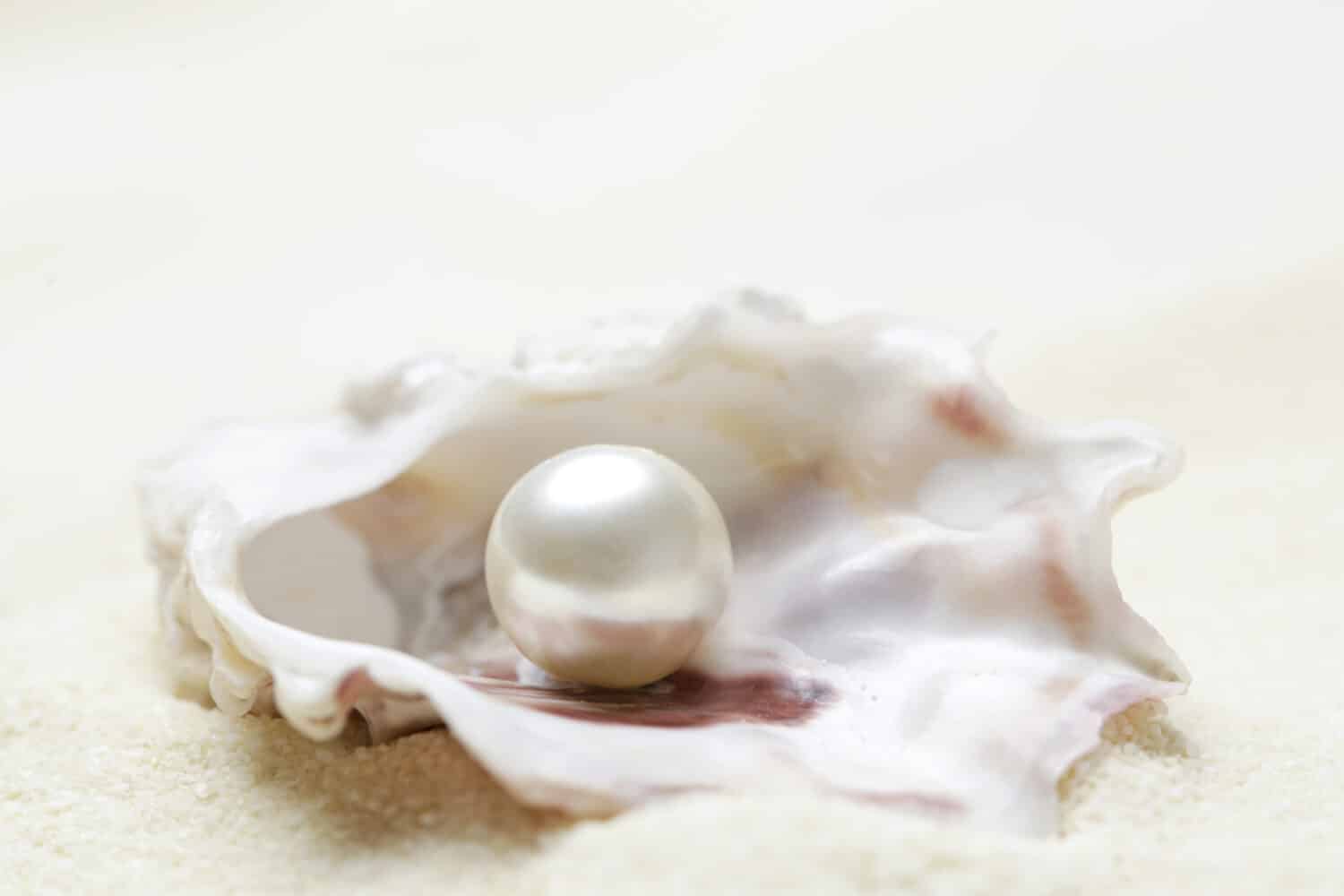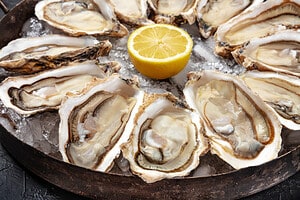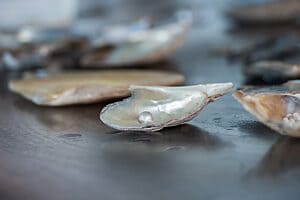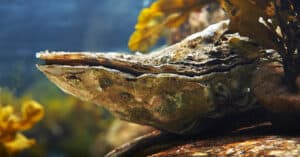Most people don’t expect to find a shiny white pearl after prizing open an oyster — but there are some types of oysters that do regularly produce pearls. In fact, the reason why some oysters make pearls more than their bivalve counterparts is due to a very distinctive biological process.
Why Oysters Make Pearls
An oyster’s tough outer shell consists of calcium carbonate, also known as nacre. Made up of proteins and minerals secreted from the oyster’s mantle, over time, the nacre forms layers. These layers expand as the oyster grows.
This process also happens inside the oyster, specifically when an irritant enters the outer shell. The irritant can be anything from a grain of sand to a parasite or worm. Additionally, farmers can place an irritant or “bead” in order to encourage production. Once the irritant penetrates the oyster, a hard layer of nacre forms, building up layer after layer. Over time, these accumulated layers form a pearl. The size depends on how long the oyster builds up nacre layers. It can take anywhere from six months to several years to make a pearl. Additionally, the marine mollusks must also reach a mature age of about three years before producing pearls.
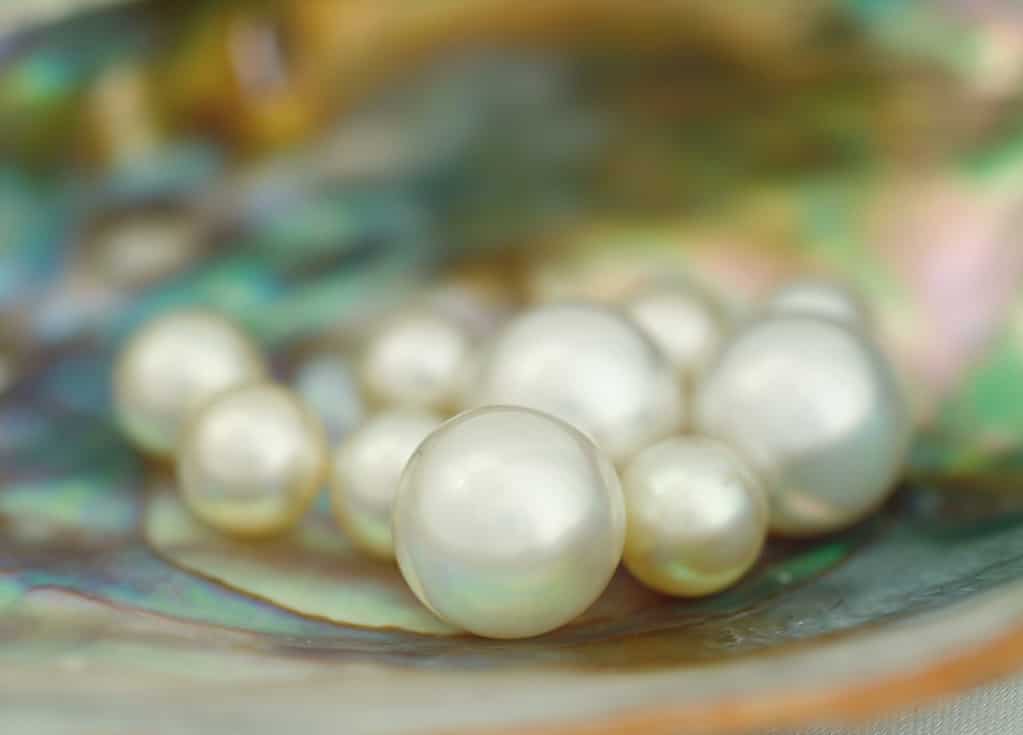
Pearl size depends on built-up nacre layers inside the oyster.
©Plamen Galabov/Shutterstock.com
Pearl-Producing Oysters
There are many different types of oysters. But, while some food varieties in the family Ostreidae can produce pearls, it’s highly unlikely to find the precious gem in your average restaurant or market variety. Often, the pearls produced by these varieties tend to be very small, irregular, and worthless.
It is pearl oysters of the family Pteriidae, that produce pearls used in jewelry and prized for their value. Overall, there are four main types: silver-lipped, black-lipped, Akoya oysters, and Pinctada albina. The silver-lipped variety is the most common type commercially harvested and farmed for the pearling industry.
Saltwater Varieties
Saltwater oysters make some of the world’s most beautiful and distinctive pearls. Requiring warm, clean, pollutant-free water to grow, many of these oysters can be cultivated with or without human intervention.
Silver-Lipped Oysters
Pinctada maxima is the most common type of pearl-producing oyster. A bivalve mollusk from the Pteriidae family, it comes in both silver- and gold-lipped varieties. Both have a large, oval-shaped outer shell with a distinctive sheen. Found in the Indo-Pacific region, these varieties produce the world’s largest and most valuable pearls (aka South Sea). The Pinctada maxima can produce pearls ranging from 4-25mm in size. The pearls come in many colors, including white, black, silver, gold, and champagne.
Black-Lipped Pearl Oysters
Pinctada margaritifera, or the black-lipped, produces some of the world’s most valuable pearls (aka Black Tahitian). Found in tropical and sub-tropical waters, it often lives in coral reefs up to 75mm deep. Known for its distinctive black lip, it also has a large, iridescent interior. The Pinctada margaritifera can produce pearls ranging from 10-18mm in size.
Akoya Pearl Oysters
Pinctada fucata martensii, also known as Akoya pearl oysters, consist of both black- and yellow-shell varieties. Found in the sandy bottoms of estuaries, Akoya oysters are mostly cultivated in Japan and the southern coast of Korea. The Japanese commercialized them in the 19th century to produce the highly sought-after Hanadama Akoya pearls. The Akoya has a distinctive pearly lining, and its pearls can range from 6-10mm in size.
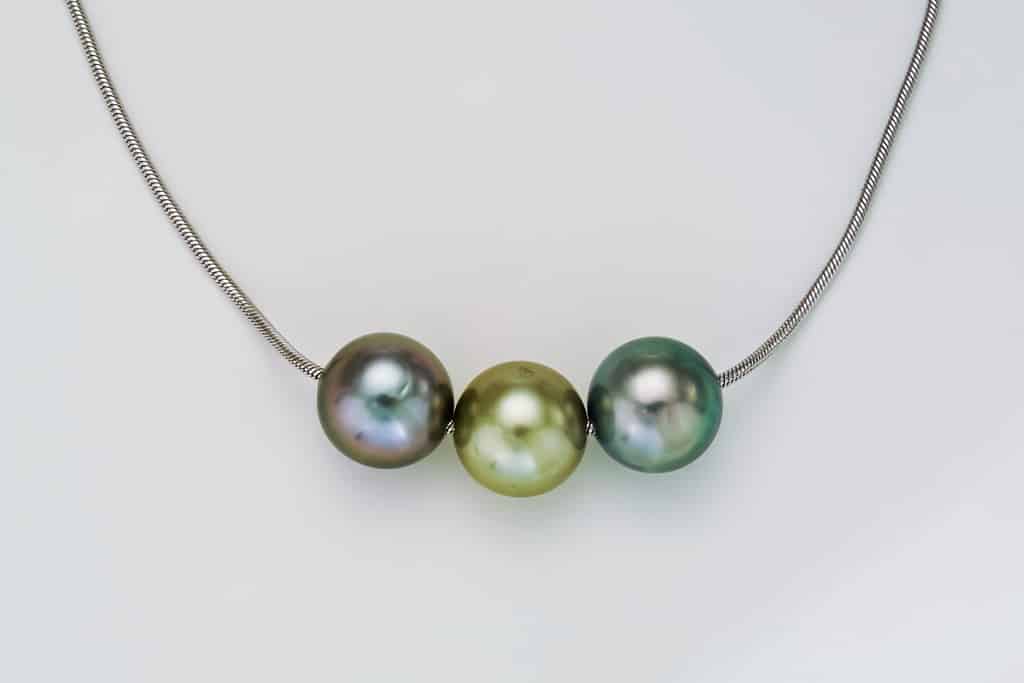
Oysters can produce pearls that come in many different colors.
©Van Rossen/Shutterstock.com
Pinctada albina Oysters
Found mainly on Australia’s tropical northern coast, the Pinctada albina produces pearls with especially lustrous hues, making it highly sought-after by jewelry makers around the world. The Pinctada albina produces pearls that can range from 2-12mm in size. Its colors include white, pink, yellow, and aqua, among others.
Freshwater Varieties
Freshwater pearl oysters can also produce beautifully-hued pearls. Cultivated mostly in rivers and lakes throughout Asia, freshwater varieties tend to produce more irregular pearls than their saltwater counterparts. This is due to their more asymmetrical anatomies. These types of freshwater pearls can grow anywhere from 4-12mm in size and come in a variety of colors. Notable colors include pink, lavender, and golden-hued pearls.
Summary
Oysters produce pearls as the result of a biological process that protects them from harm. The oyster’s mantle secretes calcium carbonate (or nacre) if a foreign irritant —such as a parasite, piece of shell, or even sand— penetrates the inner shell. The nacre then covers the irritant, forms layers, and eventually becomes a pearl. Now farmed commercially around the world, the world’s top pearl-producing oysters are kept in carefully curated conditions to ensure maximum production. Known as “cultured” oysters, they make pearls when a farmer manually introduces an irritant into the mantle. While oysters are not the only pearl-producing mollusk, it is much rarer for clams and mussels to make pearls.
Frequently Asked Questions
Does an oyster die when you remove its pearl?
No, provided the pearl is extracted very carefully during harvesting.
How are pearls removed from oysters?
A farmer or harvester must make a small and careful surgical slit in the oyster’s mantle.
How many pearls can an oyster make?
Some varieties can produce two to three pearls in their lifetime.
Thank you for reading! Have some feedback for us? Contact the AZ Animals editorial team.

